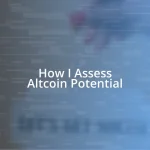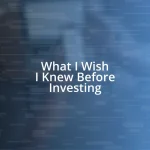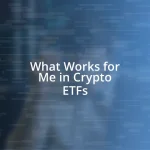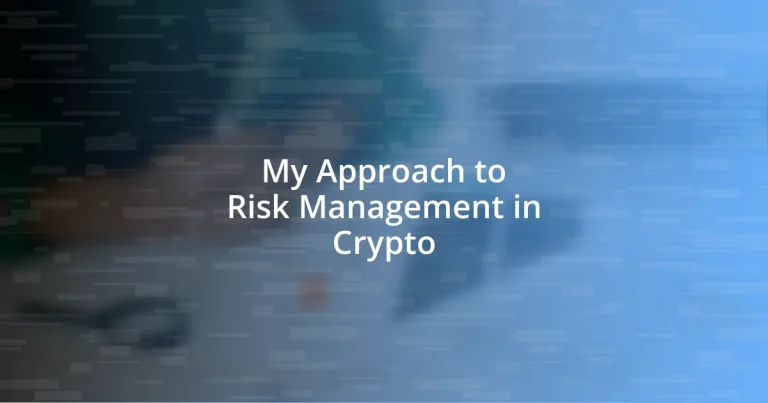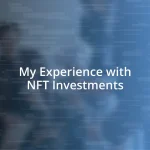Key takeaways:
- Understanding and implementing a clear risk management strategy, including techniques like stop-loss orders and portfolio diversification, is essential for navigating the volatile crypto market.
- Identifying various types of risks, such as market, liquidity, regulatory, and cybersecurity risks, is crucial for informed investment decisions and maintaining emotional discipline.
- Learning from past failures, including the importance of thorough research and security, helps shape a more resilient and proactive approach to crypto investments.
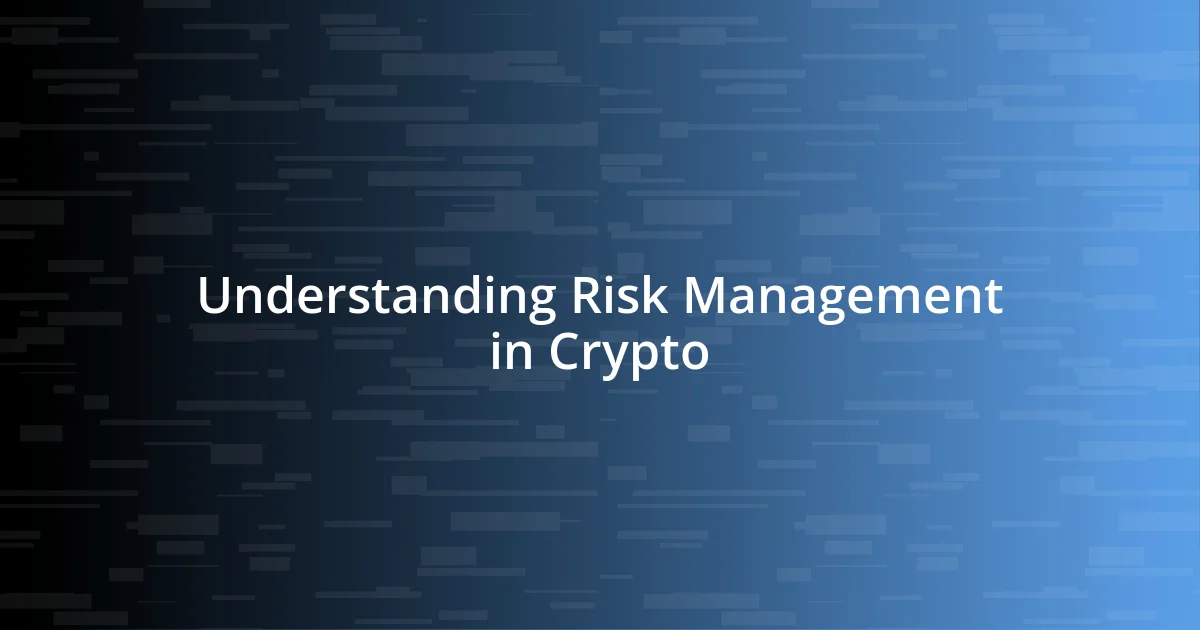
Understanding Risk Management in Crypto
Risk management in crypto is more crucial than ever as the market is notoriously volatile. I remember when a sudden price drop caught me off guard, leading to a significant loss that stung for weeks. It taught me a valuable lesson about preparing for unexpected shifts in market sentiment.
Having a clear risk management strategy is not just a safety net; it’s a roadmap. For instance, employing techniques like setting stop-loss orders or diversifying my portfolio can dramatically reduce potential losses. Have you ever considered how much peace of mind comes from knowing there’s a plan in place?
Understanding the various types of risk—market risk, liquidity risk, and operational risk—can feel overwhelming. Yet, recognizing these allows you to make informed decisions and tailor your strategies to your individual tolerance for risk. Personally, I find this knowledge empowers me, enabling me to navigate this complex landscape with greater confidence. It’s like mastering the fundamentals of a game before attempting to play at a higher level.
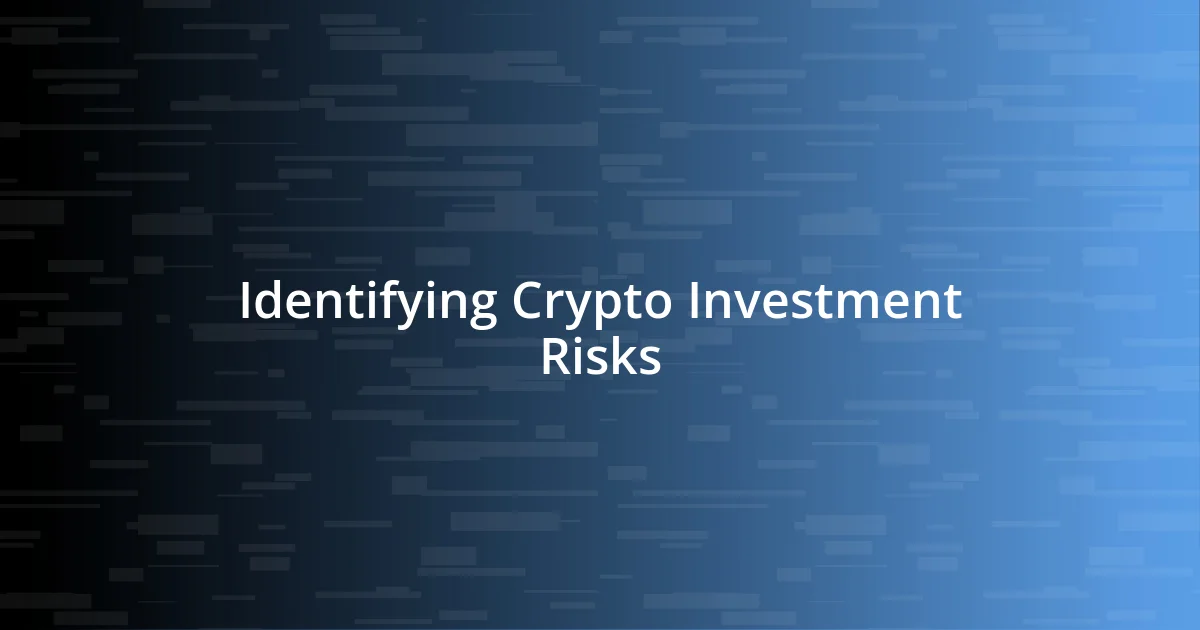
Identifying Crypto Investment Risks
Identifying the various risks in crypto investment is essential for successful navigation in this unpredictable market. I’ve had my share of learning experiences that underscored how recognizing potential pitfalls can make all the difference. For instance, I once jumped into a promising project without fully understanding its fundamentals, and it turned out to be riddled with red flags. That unfortunate choice taught me to scrutinize projects more closely before committing any funds.
Here are some key risks to watch out for:
- Market Risk: Sudden fluctuations in cryptocurrency prices can lead to significant financial loss.
- Liquidity Risk: Not being able to sell an asset easily due to a lack of buyers can put your investments in jeopardy.
- Regulatory Risk: Changes in government regulations can impact the availability and legality of certain cryptocurrencies.
- Cybersecurity Risk: Hacks and security breaches can lead to theft of funds if precautions aren’t taken.
- Operational Risk: Failures in the technology or processes of a platform can disrupt trading and access to your funds.
- Emotional Risk: Fear and greed can drive impulsive decisions, often leading to regrettable outcomes.
Reflecting on my journey, I’ve come to realize that staying aware of these risks is not just about protecting my capital; it’s about fostering a mindset that values patience and informed decision-making. Understanding these risks empowers me to approach investments with caution and clarity.
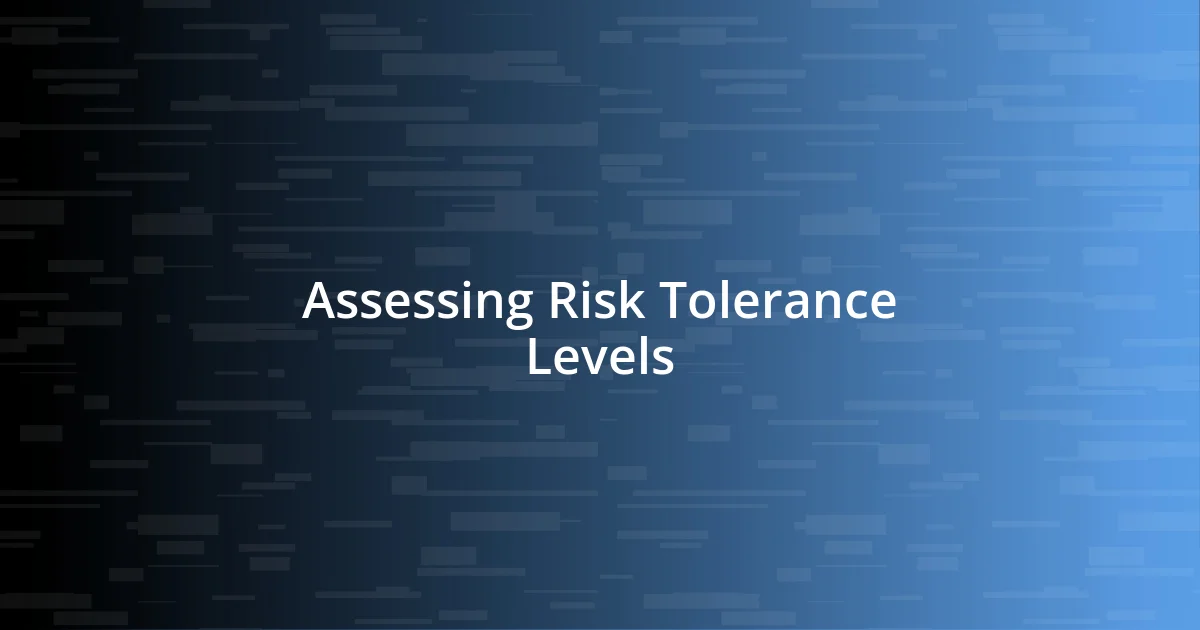
Assessing Risk Tolerance Levels
Assessing your risk tolerance in crypto is akin to tuning a musical instrument; it requires fine adjustments based on your personal comfort with uncertainty. I remember a time when I dived into a trending altcoin without fully grasping my limits. My heart raced with excitement, but when the market dipped, I felt a wave of panic that overwhelmed me. This experience taught me that knowing my risk tolerance shapes not only my investment choices but also my emotional well-being.
Understanding where you align on the risk spectrum is crucial. Some people thrive on high-stakes investments, feeling invigorated by the adrenaline of potential rewards, while others prefer a steadier path. I’ve spoken to friends who wholeheartedly embrace volatility; their thrill lies in unpredictability. In contrast, my approach tends to lean toward more measured investments, as this balance keeps my stress levels in check.
To help clarify the differences in risk tolerance, I find it useful to visualize it through a comparison table. It helps in quickly identifying where I might fit and encourages me to communicate my boundaries better when discussing crypto investments with others. I encourage you to create your own assessments as well!
| Risk Tolerance Level | Characteristics |
|---|---|
| High | Thrives on market fluctuations, willing to endure potential losses for higher gains. |
| Moderate | Seeks a balance between risk and reward, comfortable with some volatility but prefers safeguarding capital. |
| Low | Prioritizes capital preservation, avoids high-risk investments, prefers steady growth options. |
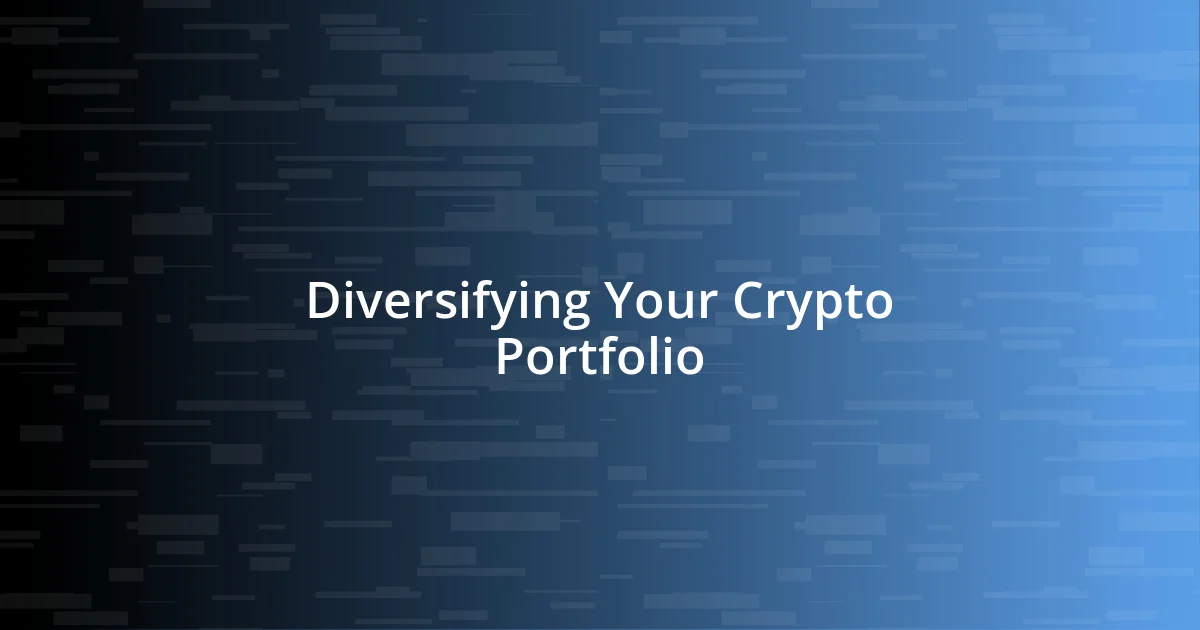
Diversifying Your Crypto Portfolio
When it comes to diversifying your crypto portfolio, I’ve learned firsthand that variety can truly be your best friend. I remember one time when a friend encouraged me to invest heavily in a single cryptocurrency that was gaining traction. I hesitated, thinking about how much more secure and stable my portfolio could be if it included a mix of different assets. That’s when it hit me: putting all my eggs in one basket can lead to heartache, especially when the market shifts unpredictably.
In my experience, allocating resources across various cryptocurrencies—whether it’s established names like Bitcoin or Ethereum, or experimenting with promising altcoins—can mitigate risks. Each asset carries unique characteristics, and some may thrive while others falter. I once spread my investments across a few tokens, and when one experienced a downturn, the impact on my overall portfolio was minimal. This balance not only eased my anxiety during market fluctuations but also provided me with a sense of security that I didn’t realize I needed.
Have you ever considered how much diversity might ease your concerns about volatility? For me, diversifying also created opportunities to explore different sectors within crypto, like DeFi (Decentralized Finance) and NFTs (Non-Fungible Tokens), sparking my curiosity and broadening my knowledge base. It’s thrilling to see how a diversified approach can turn challenges into opportunities for growth, allowing me to learn and adapt as I navigate this ever-evolving landscape.
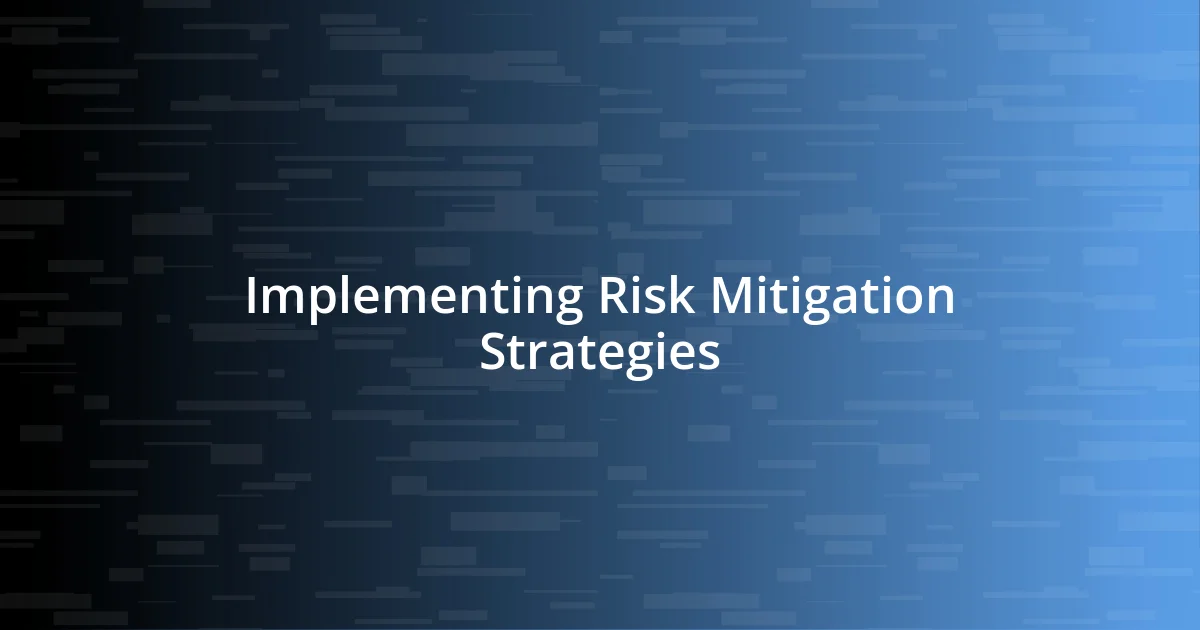
Implementing Risk Mitigation Strategies
Implementing risk mitigation strategies in cryptocurrency is essential for maintaining not just financial health but also peace of mind. I still vividly recall a moment when I set up automated sell orders to manage potential losses during a market downturn. Seeing those orders protect my investment felt like a safety net, alleviating some anxiety from the unpredictable swings common in crypto. This experience underscored the importance of having a predetermined exit strategy; it’s a practice I now swear by.
Another strategy that really resonates with me is using stop-loss orders. When I first heard about them, I was skeptical—how could a simple order help me navigate such a volatile market? But after setting one for a recent investment, I experienced a sense of control that I hadn’t anticipated. Losing money isn’t fun, but knowing that I had a plan in place made the process less overwhelming. Now, stop-loss orders are a staple in my trading toolkit, ensuring my losses remain manageable without me having to monitor the market around the clock.
Have you ever considered the role of emotional discipline in your trading? I’ve found that a crucial part of risk management is not just about technical strategies but also about maintaining a level head. On days when the market seems chaotic, taking a step back and evaluating my emotional responses helps ground my decision-making. I remind myself that letting excitement or fear govern my choices could lead to hasty actions, which I’ve learned from tough experiences.
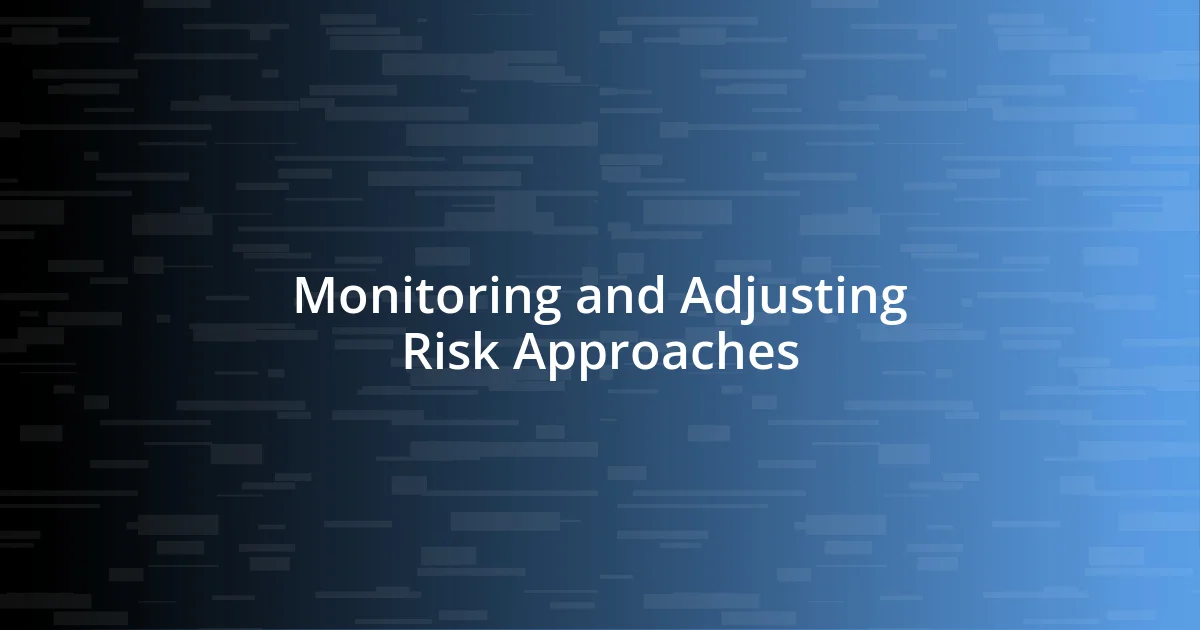
Monitoring and Adjusting Risk Approaches
Monitoring and adjusting risk approaches in the cryptocurrency space is something I take very seriously. I recall a time when I noticed a sudden surge in a project I was backing, and while it was tempting to ride the wave, I paused to assess whether my investment still fit within my risk parameters. This moment reminded me that regular evaluations can save you from impulsive decisions that might lead to regrettable outcomes.
Keeping a close eye on market trends and developments is just as vital as the initial investment strategy. I remember hearing news about regulatory changes that could impact a cryptocurrency I held, and it sent me rushing to reassess my positions. It made me realize that being proactive rather than reactive is crucial. I ask myself regularly, “How does this news affect my portfolio?” This questioning habit helps me remain vigilant and agile in a landscape that changes at lightning speed.
Have you ever experienced a huge dip in your investments and wondered how it could have been prevented? I’ve had my share of such moments, where simply adjusting my risk tolerance could have minimized losses. By setting alerts for significant price movements and employing tools to track portfolio performance, I’ve learned to pivot quickly. It’s all about evolving with the market to maintain a solid foundation while reducing exposure to unpredictable fluctuations.

Learning from Past Crypto Failures
Reflecting on past crypto failures is like holding a mirror to our decisions; it reveals what not to repeat. For instance, I remember investing in a promising ICO that skyrocketed initially, only to crash once the hype faded. I felt a mix of disappointment and disbelief, realizing too late that I hadn’t done enough due diligence. This taught me the hard way that thorough research and skepticism are key; it’s essential to look beyond the surface hype.
One failure that particularly stings was when I neglected security measures. I had my funds in a wallet that I thought was secure but ended up being compromised. That moment of panic—realizing my hard-earned investment was gone—taught me the critical lesson about prioritizing security features over convenience. Have you ever felt that rush of fear? It drives home the importance of safeguarding your assets, reminding me that being proactive pays off.
These experiences underscore a valuable insight: the crypto landscape is rife with lessons. Each setback has shaped my approach to risk management. I often ask myself, “What can I learn from this?” Embracing that mindset not only helps me grow but also keeps me resilient in the face of potential failures. Sharing these stories can foster a community that thrives on learning together, turning past mistakes into future triumphs.






